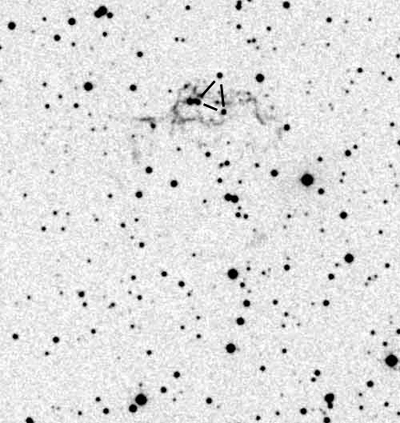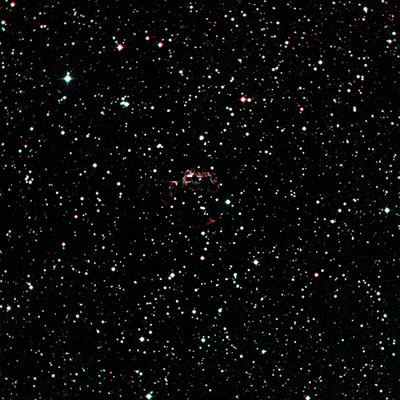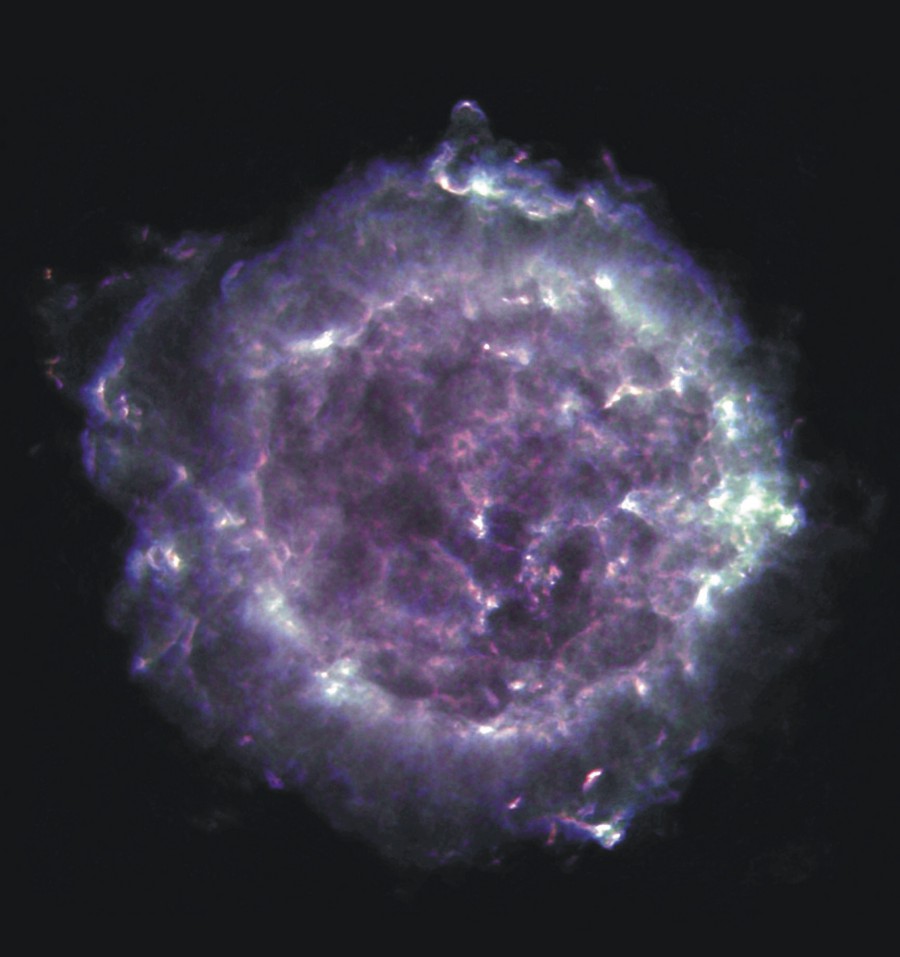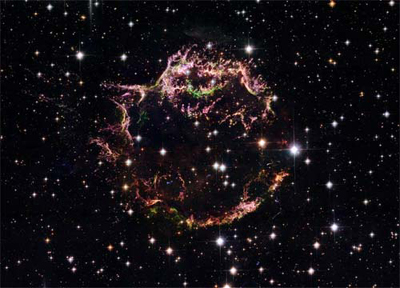|

|
Without
filter, at 200 and 350x, I suspected an elongated glow at the correct
position, which contains, however, also several tiny stars. Three stars
form an almost equilateral triangle and could be held almost steadily. The
crescent shaped nebulosity extended well beyond this triangle. With UHC filter,
the SNR was easily identified as nebulosity (best at 200x) and clearly not
caused by stars. With OIII (Lumicon) the SNR could be seen as well,
but not as prominent as with UHC. Here is a
finder chart.
According to the images, I had observed the central part of the northern
shell (on the POSS image the small
triangle is marked). The observed nebulosity was larger than this triangle.
Here
is a narrow band image by Richard Crisp. |



